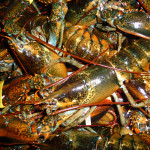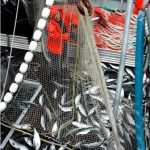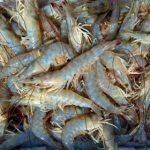Tag Archives: Diane Pleschner-Steele
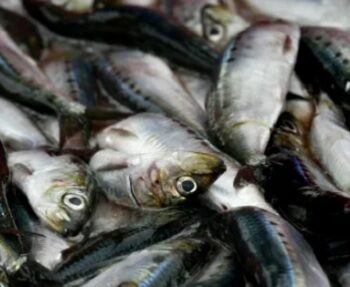
The sardine war hits a lull: Commercial fishing industry lands a victory in Pacific sardine management
The Pacific Fishery Management Council, which oversees fishing of Pacific sardines, voted unanimously in September to maintain the current sardine fishery management process that calls for reassessments after each year’s stock assessments. At the moment, the direct commercial sardine fishery is closed. “Fishery managers have failed to learn from the mistakes of history,” said Geoff Shester, senior scientist at marine conservation group Oceana,,, Diane Pleschner-Steele, executive director of the California Wetfish Producers Association, argues that sardines are not overfished and “the Council’s unanimous decision shows that they understand reality, the big picture.” >click to read< 14:27
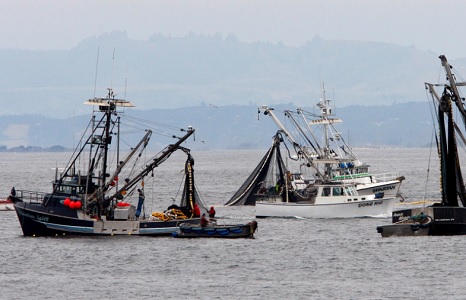
Squid are back in abundance in Monterey Bay
The squid fishery is among the most lucrative and productive in the state, frequently valued in the double-digit millions. According to the California Department of Fish and Wildlife, landings from California market squid (Doryteuthis opalescens) were over 34,000 short tons in the 2018-2019 season, generating more than $33 million in revenue. But according to Diane Pleschner-Steele, the executive director of the California Wetfish Producers Association, these charming and elusive animals can be difficult to pin down. The statement has proven true in the last couple of years. Spawning squid are targeted because they die shortly after they reproduce, and so fishing season — though technically open all year round — coincides with the spawning season. The catch is historically best in Southern California in fall and Central California in spring-summer. >click to read< 10:35

PFMC Officials: No Sardine Fishing Off California This Year Due to Steep Population Decline
West coast regulators have voted unanimously to ban commercial sardine fishing for the fifth straight year after a recent evaluation of the northern Pacific stock revealed a steep decline. The ban on commercial sardine catch spans the entire length of the U.S. West Coast.,,, A new assessment of northern Pacific sardine stocks by the National Oceanic and Atmospheric Administration (NOAA).,,, Not all fishermen agree with the decision to keep the sardine fishery shuttered. Diane Pleschner-Steele, executive director- California Wetfish Producers Association, said NOAA’s sardine survey under-counts the fish, and that the fishermen she hears from are noticing a comeback. >click to read<10:59
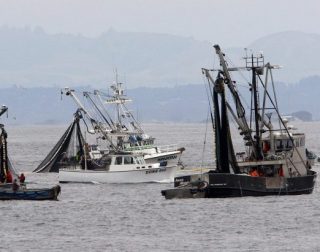
Sardine fishery likely will be closed this season
Sardine fishermen in Monterey Bay are facing a fifth straight year of restrictions on the amount they will be permitted to catch, creating financial hardships for the commercial industry.,,, Diane Pleschner-Steele, executive director of the California Wetfish Producers Association, was not available to comment Wednesday, but she told the Monterey Herald following the 2018 assessment that “fishermen are seeing more sardines, not less, especially in nearshore waters.” She believes the methods in which the Marine Fisheries collect data is flawed. Not only does Pleschner-Steele reject the notion that overfishing played a role in the decline of the sardine stock, she calls the stock’s collapse “fake news.” >click to read<20:16
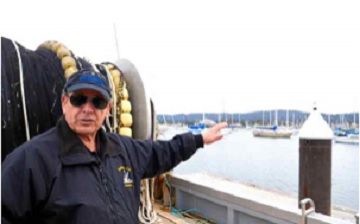
Fishermen know the truth about sardines
Reporter Anne Roth quoted me in her article “When will sardines return? Not any time soon say scientists.” But she misunderstood what I said. I’m one of the fishermen Diane Pleschner-Steele quoted in her comment, “Fishermen are seeing more sardines, not less.” I’ve been fishing for 60 years, and I’ve seen sardines come, go and come back again. But the government surveys that assess the biomass don’t come into coastal waters where the fish are now. In fact, we began seeing an abundance of small sardines right before the 2015 El Niño. Aniello Guglielmo, Monterey >click to read< for more articles on this issue, >click to read<12:19
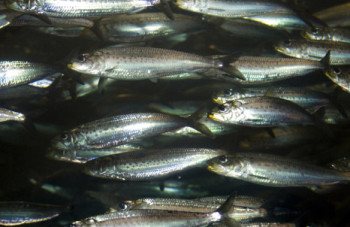
California Wetfish Producers Association: Sardine Fishery Collapse Latest Fake News
This Sunday, April 8, the Pacific Fishery Management Council is meeting in Portland to debate the fate of the West Coast sardine fishery, after the 2018 sardine stock assessment estimated the biomass has declined by 97 percent since 2006. According to the California Wetfish Producers Association, the only problem with that finding is it belies reality. “Fishermen are seeing more sardines, not less, especially in nearshore waters. And they’ve been seeing this population spike for several years now,” said Diane Pleschner-Steele, executive director of the California Wetfish Producers Association (CWPA). “This stock assessment was an update that was not allowed to include any new methods and was based primarily on a single acoustic survey,,, >click to read<21:15

As the Pacific sardine population keeps dropping, the feds come under scrutiny
On April 8, the Pacific Fishery Management Council – a body of appointed officials that regulates fisheries off the West Coast – will be presented with the draft assessment of the sardine population from roughly southern California to Canada. The news it brings is neither good for fishermen nor the local marine ecosystem: The estimated number of sardines in July 2018 – which dictates policy for the 2018-19 fishing year – is 52,065 metric tons, an approximately 97-percent drop from 2006, the most recent peak. What is in dispute: the accuracy of the population assessment, and how we got here.>click to read<15:30
Pacific sardine population remains low, says National Marine Fisheries Service
 A study released Friday by the National Marine Fisheries Service puts the northern Pacific sardine population off the West Coast at perilously low levels for the third straight year. The findings, which will be reviewed next month by The Pacific Fishery Management Council, while disheartening for both environmentalists and fishermen, are also disputed by some in the fishing industry who question the method by which these forage fish are counted.,, But Diane Pleschner-Steele, who is the executive director of the California Wetfish Producers Association and represents the majority of boat fishermen and processors who harvest wetfish, said that there’s significant error in the way the sardines are counted and that current government surveys are not surveying adequately the fish that are in the near shore ocean. “Closing the sardine fishery basically closes everything for us, except for squid,” said Pleschner-Steele. “We are seriously considering applying for disaster relief.” read the article here 09:26:19
A study released Friday by the National Marine Fisheries Service puts the northern Pacific sardine population off the West Coast at perilously low levels for the third straight year. The findings, which will be reviewed next month by The Pacific Fishery Management Council, while disheartening for both environmentalists and fishermen, are also disputed by some in the fishing industry who question the method by which these forage fish are counted.,, But Diane Pleschner-Steele, who is the executive director of the California Wetfish Producers Association and represents the majority of boat fishermen and processors who harvest wetfish, said that there’s significant error in the way the sardines are counted and that current government surveys are not surveying adequately the fish that are in the near shore ocean. “Closing the sardine fishery basically closes everything for us, except for squid,” said Pleschner-Steele. “We are seriously considering applying for disaster relief.” read the article here 09:26:19
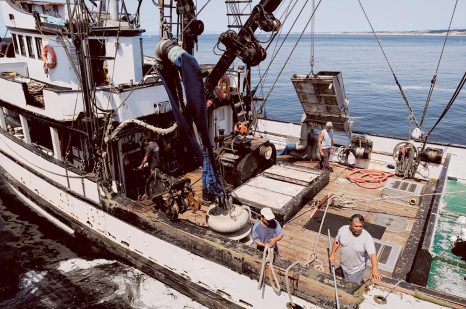
California’s confidential fishing rights leave millions of dollars in mystery.
Over years of writing about and working in the fishing industry, I (Nick Rahaim) have often found it difficult to substantiate many things told to me – often as gospel – on fishing boats and in salty bars. Many of those stories aren’t of much consequence – that most fishermen found dead in the water have their fly unzipped, or that whistling in the wheelhouse will blow up a storm. But another story represented enough potential injustice that I had to learn more. A year ago, while working as a fisherman and freelance journalist in Alaska, I heard California seafood companies that buy and sell product were buying up squid permits – permanent fishing rights, limited in number, bought and sold on a market – from independent fishermen. The implication: They were trying to corner the market, creating squid cartels where they could control prices paid to fishermen, causing ripples down the supply chain to the consumer. (More on the system of fishing rights later.) Read the story here 10:45
Report: Sharks in peril off coast because of gillnets, Advocates disagree
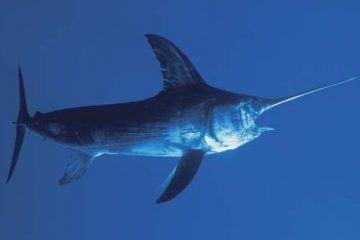 The report, “California Driftnet Fishery: The True Costs of a 20th Century Fishery in the 21st Century,” issued by Marin’s Turtle Island Restoration Network, says the California driftnet fishery is taking a toll on shark populations. But supporters of the gillnet fishery note it is already monitored by federal authorities and question data in the report. “There are good regulations in place and the populations are strong,” said Jonathan Gonzales, president of the Ventura County Commercial Fishermen Association, adding that data show thresher shark populations are improving. “There is no overfishing like there once was. It’s really a success story.” “We see this report as highly sensational and grossly inaccurate,” said Diane Pleschner-Steele, executive director of the California Wetfish Producers Association. The California Fisheries and Seafood Institute — in a letter addressing a bill to eliminate gillnets — states 90 percent of the fish caught by nets in the swordfish fishery either go to market or are released alive. Read the story here 09:51
The report, “California Driftnet Fishery: The True Costs of a 20th Century Fishery in the 21st Century,” issued by Marin’s Turtle Island Restoration Network, says the California driftnet fishery is taking a toll on shark populations. But supporters of the gillnet fishery note it is already monitored by federal authorities and question data in the report. “There are good regulations in place and the populations are strong,” said Jonathan Gonzales, president of the Ventura County Commercial Fishermen Association, adding that data show thresher shark populations are improving. “There is no overfishing like there once was. It’s really a success story.” “We see this report as highly sensational and grossly inaccurate,” said Diane Pleschner-Steele, executive director of the California Wetfish Producers Association. The California Fisheries and Seafood Institute — in a letter addressing a bill to eliminate gillnets — states 90 percent of the fish caught by nets in the swordfish fishery either go to market or are released alive. Read the story here 09:51







 Recent media accounts report how sea lion pups are stranding on shore and dying in record numbers because there aren’t enough sardines and anchovies – sea lions’ favorite food – to support their growing population. For example, the Orange County Register, even after acknowledging the cyclical nature of the ocean and marine species, points to overfishing as the problem. (
Recent media accounts report how sea lion pups are stranding on shore and dying in record numbers because there aren’t enough sardines and anchovies – sea lions’ favorite food – to support their growing population. For example, the Orange County Register, even after acknowledging the cyclical nature of the ocean and marine species, points to overfishing as the problem. (


























